
Recently, while I was reading The Revised Vault of Walt written by noted Disney historian (and AllEars.net Feature Writer) Jim Korkis, I ran across an interesting quote. Walt Disney was writing of memories from his school days and commented, “It was always my inclination to think in pictures rather than words.” My mind started to play with the concept of thinking in pictures; it was intriguing.
I soon concluded that it was quite natural that Walt began by thinking in pictures when he was working on a project. You see, Walt started out as an animator, an artist. That’s probably how he always thought of himself, not as an innovator, not as a businessman, but as a cartoonist.
Walt was involved, in a very hands-on way, in every project undertaken during his lifetime and he always followed the same process; he started with storyboards.
Here’s how Disney Archive Director Dave Smith replied to a question about storyboards in the Summer 2001 edition of Disney Magazine.
There you have it, confirmed by Disney Historian and Archivist Dave Smith, the storyboard process was first developed at Walt Disney Studios in the early 1930’s.

When Walt and his animators were working on a project, the first step was to outline the story, the plot. They made sketches of the various scenes in the story and hung them, in order, around the walls. A storyboard began to take shape! Those sketches became the storyboard!
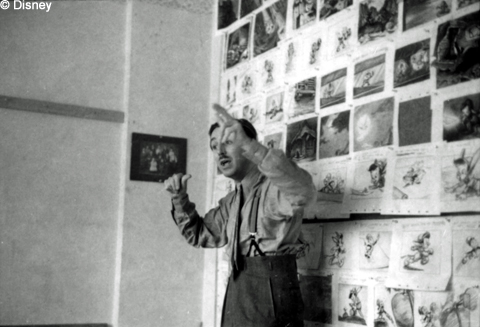
Soon each scene would be “fleshed out” – every scene would have a storyboard of its own. Only after the storyboard was complete in every way and the animators all understood the project very clearly, did they begin drawing the artwork which would be used in the animation.
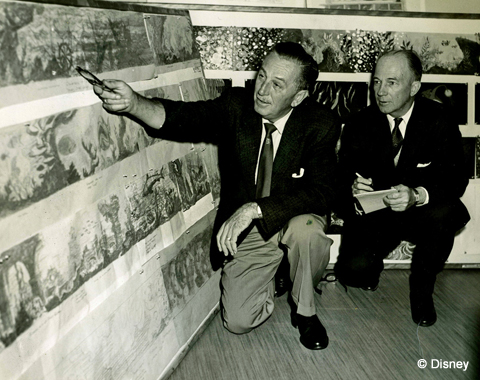

Even today, in the age of Computer Generated Animation, the story is fully developed using storyboards before anything goes into production.
In the early 1950’s Walt Disney began a daring project which changed the entertainment and vacation world forever. He designed and built Disneyland – and he thought in pictures while he did it!
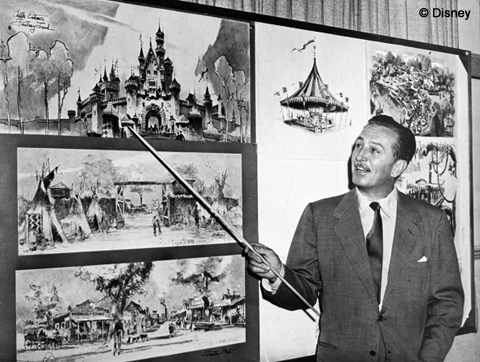

Here’s how the Imagineers describe it in The Imagineering Guide to the Magic Kingdom:
“Walt was our first Imagineer, but as soon as he began developing the early ideas for Disneyland, he started recruiting others to help him realize his dream. He snapped up several of his most trusted and versatile animators and art directors to apply the skills of filmmaking to the three-dimensional world. They approached this task much the same as they would a film project. They wrote stories, drew storyboards, created inspirational art, assigned the production tasks to the various film-based disciplines, and built the whole thing from scratch. Disneyland is essentially a movie that allows you to walk right in and join in the fun. As Imagineer par excellence John Hench was fond of saying in response to recent trends, “Virtual reality is nothing new… we’ve been doing that for more than fifty years!”
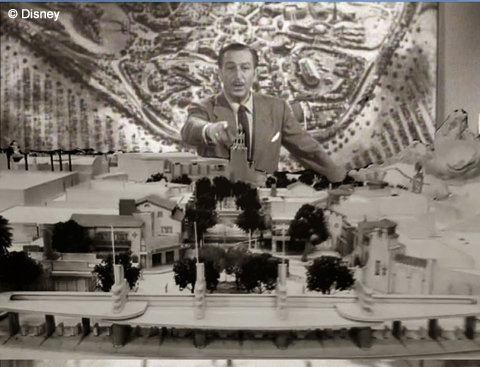
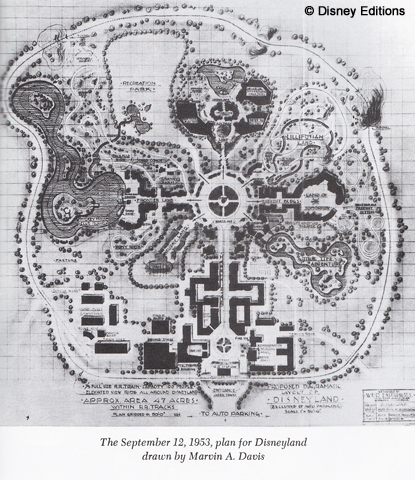

Disneyland was the first of its kind! It was an overnight success – and now, 60 years later it still sets the standard other theme park operators aspire to achieve.
Of course there are now many more Disney theme parks around the world, and there are even some pretty good imitators! But we all know that Disney parks are special. They are in a class by themselves!

If you ask what makes Disney parks different you will get scores of responses like, cleanliness, quality, themeing, attention to detail, consistency, family focus, etc., etc.
I think that the process Disney Imagineers use to design the parks plays a huge role in making their theme parks both unique and superior. I think that the quality, consistency, attention to detail and all those other unique attributes can be tied back to the use of storyboards.
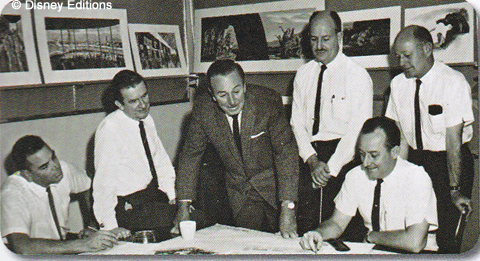
First the Imagineers designed the story; then they designed the park!
Let’s all close our eyes and imagine we are standing in the background at that first meeting in the early 1950’s. Walt called his most imaginative people, his Imagineers, together and outlined his ideas for a place where parents and children could have fun together. Walt had plenty of ideas but the Imagineers soon added their own creative touches and before you could say “Rivers of America” there were sketches on the walls, Sleeping Beauty Castle, Main Street USA, Fantasyland, Tomorrowland, Frontierland and Adventureland. The storyboard was taking shape!
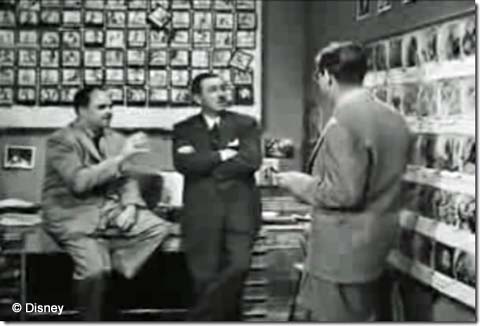
One of the Imagineers, maybe it was Walt, suggested a train station, “Let’s have the entry, the main gate, pass through the train station. Guests will not see Main Street until they come out of the station and have left the real world behind.”

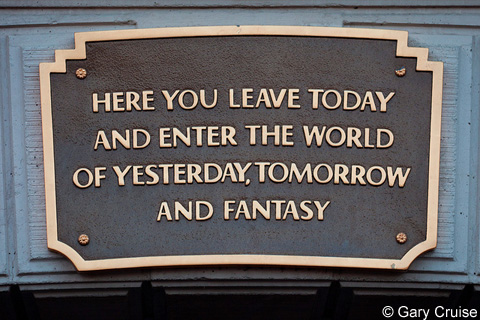
Wouldn’t it have been fun to be a spectator at that first meeting, over 60 years ago?
Soon the storyboards for each of the original “lands” were created, followed by a sketch for each individual building.
Let’s pause and look at how these storyboards helped create the themeing, consistency and quality Disney is famous for. Let’s jump ahead in time and look at Liberty Square in Walt Disney World’s Magic Kingdom.
Liberty Square was designed to reflect Colonial America at the time of the Revolutionary War. The construction style displayed in the building fa̤ades is exactly what you would have seen in that era Рfor example, look closely at the shutters on the windows, they have sagged. Iron was hard to find and very expensive in Colonial times so window shutters were supported by leather hinges which stretched over time. A very realistic touch!
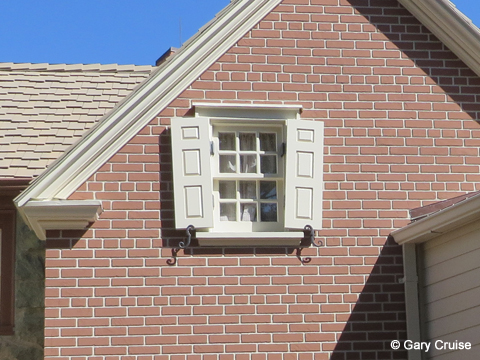
The subtle music which you hear in the background at Liberty Square is appropriate to the late 1700’s and is played using instruments which would have been common at the time. No synthesizers and no electrical amplification were used in the production of that sound track!
The Liberty Bell on display was cast from the same mold used to create the original bell in Philadelphia, and the circle of thirteen flags surrounding the bell represents the original thirteen colonies.
All of these touches were defined in the storyboard.
Part of the Disney storyboard process requires that each building or attraction must also have a “back-story” or history. Every aspect of the interior and exterior of the attraction has to be consistent with this fabricated history. Naturally, in Liberty Square this means it must be true to the Colonial era. A prime example of this is Ye Olde Christmas Shoppe.
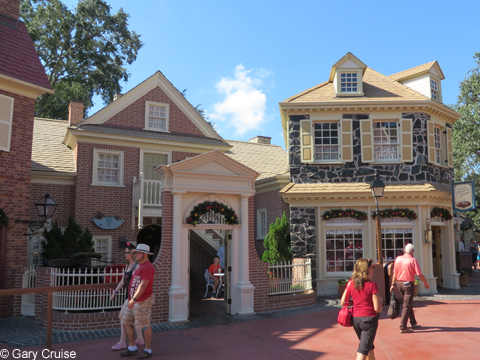
If you look closely at the exterior of the Christmas Store you can see aspects of the “back-story”. It appears to have originally been three separate colonial style buildings or storefronts, a perfume shop, a silversmith and an antique shop. Over the years the original shops changed hands and later housed a music teacher’s shop, a wood carver’s shop and the third became the home of a German family, the Kepples (named for Walt’s grandfather Kepple Disney). Next time you visit Liberty Square take a few minutes to wander through Ye Olde Christmas Shoppe. Look for the musical instruments, tools and wooden toys left by those former occupants! All of this richly detailed themeing sprang from the Imagineers and those original storyboards.

The same level of detail applies to Main Street USA. The Emporium is one huge store comprising almost the entire two blocks on the west side of the street, yet from the exterior it looks like a number of different storefronts. Have you noticed that the inside of the building changes the same way the outside does?
Here’s an experiment you can try. Next time you visit the Magic Kingdom walk along the sidewalk on the west side of Main Street. When you come to a door into The Emporium pause for a moment and look at the exterior façade of the building. Now step inside and examine the décor. See how it matches the storefront? Walk a bit further down the sidewalk and that exterior façade will change. Look in the next door; the décor inside has changed to match the new storefront outside.
Do you realize what just happened as you walked down Main Street? That’s right; you just walked through a storyboard.
Let’s hop over to another park, Disney’s Hollywood Studios, for another example. This one is a little more obvious because the storyboards are still on the walls at this one. I’m talking about “One Man’s Dream” which follows the story of Walt’s remarkable life.
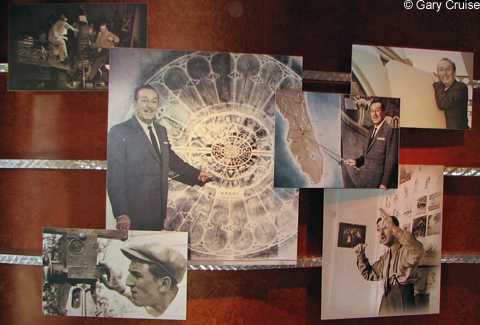
Take your time as you read all the fascinating information the exhibit contains. Those thrill rides will still be there when you finish; there’s no need to rush through this gripping story of Walt Disney and his dream!
When you get to the end of the exhibits, before you enter the theatre, pause for a few seconds and look back down the hall . . . yes, it’s true – you just walked through another storyboard.
Next time you visit a Disney park, do yourself a favor. Slow down! Take time to look at your surroundings from a different perspective.
When my inner-child looks around at a Disney park he sees mystery, excitement, magic and adventure. When I pause to let my inner-adult have a look, he notices something totally different. My adult eyes take in the many little details which create that immersive experience Disney is famous for.
Let your inner-adult look around now and then, you will see storyboards, and their influence, everywhere you look!



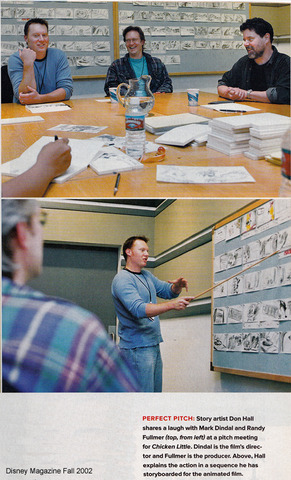

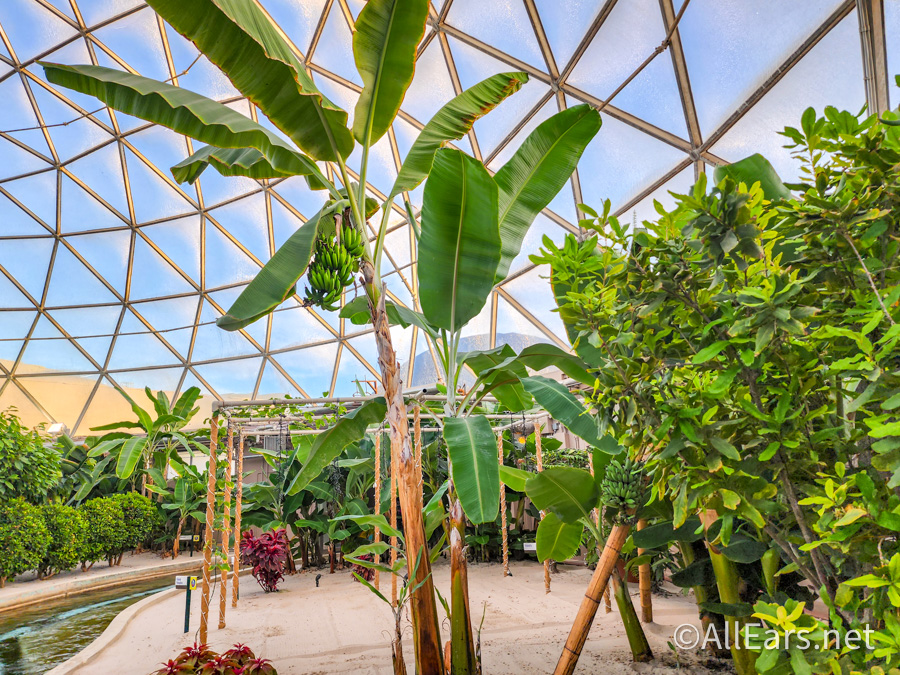
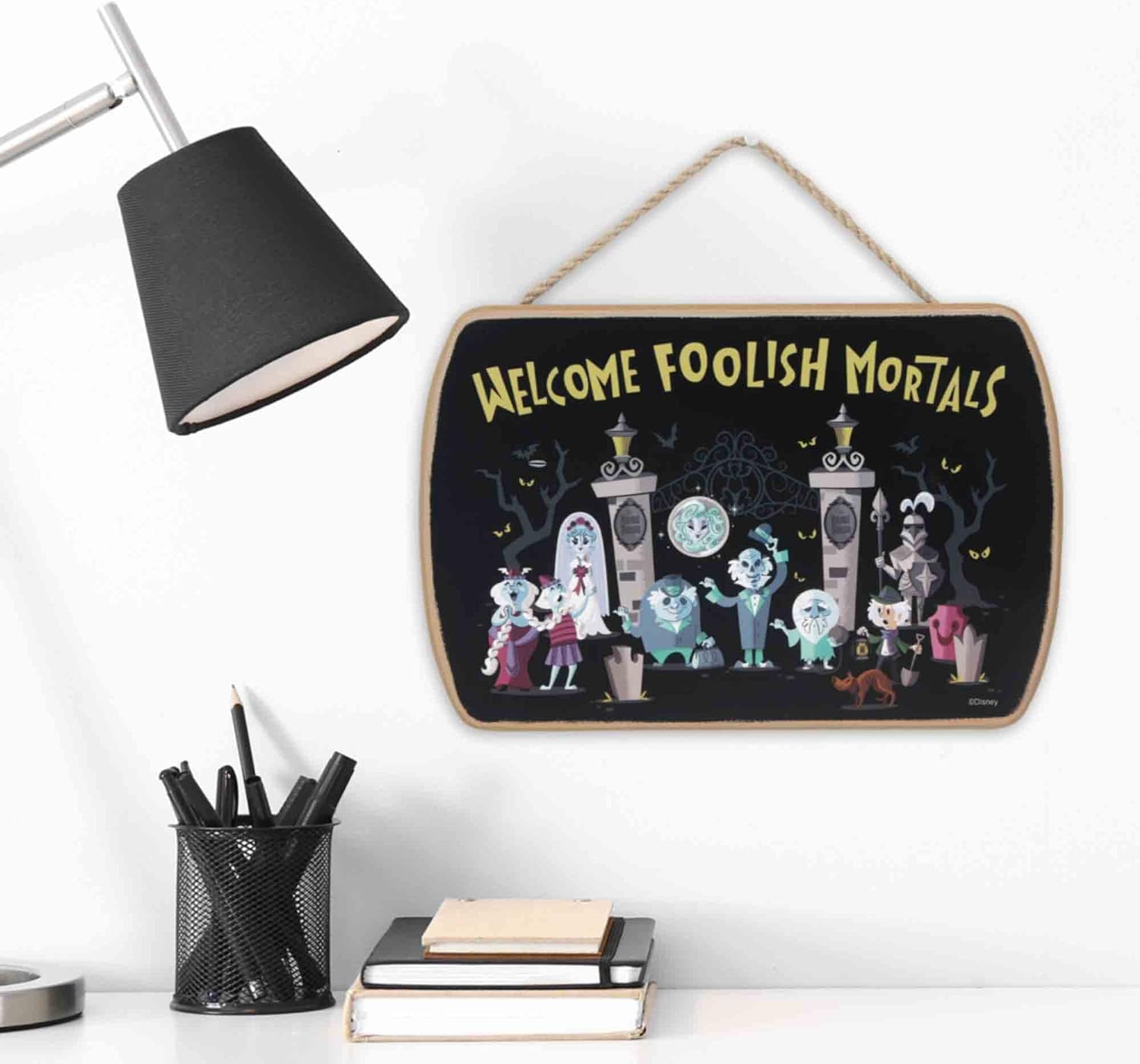


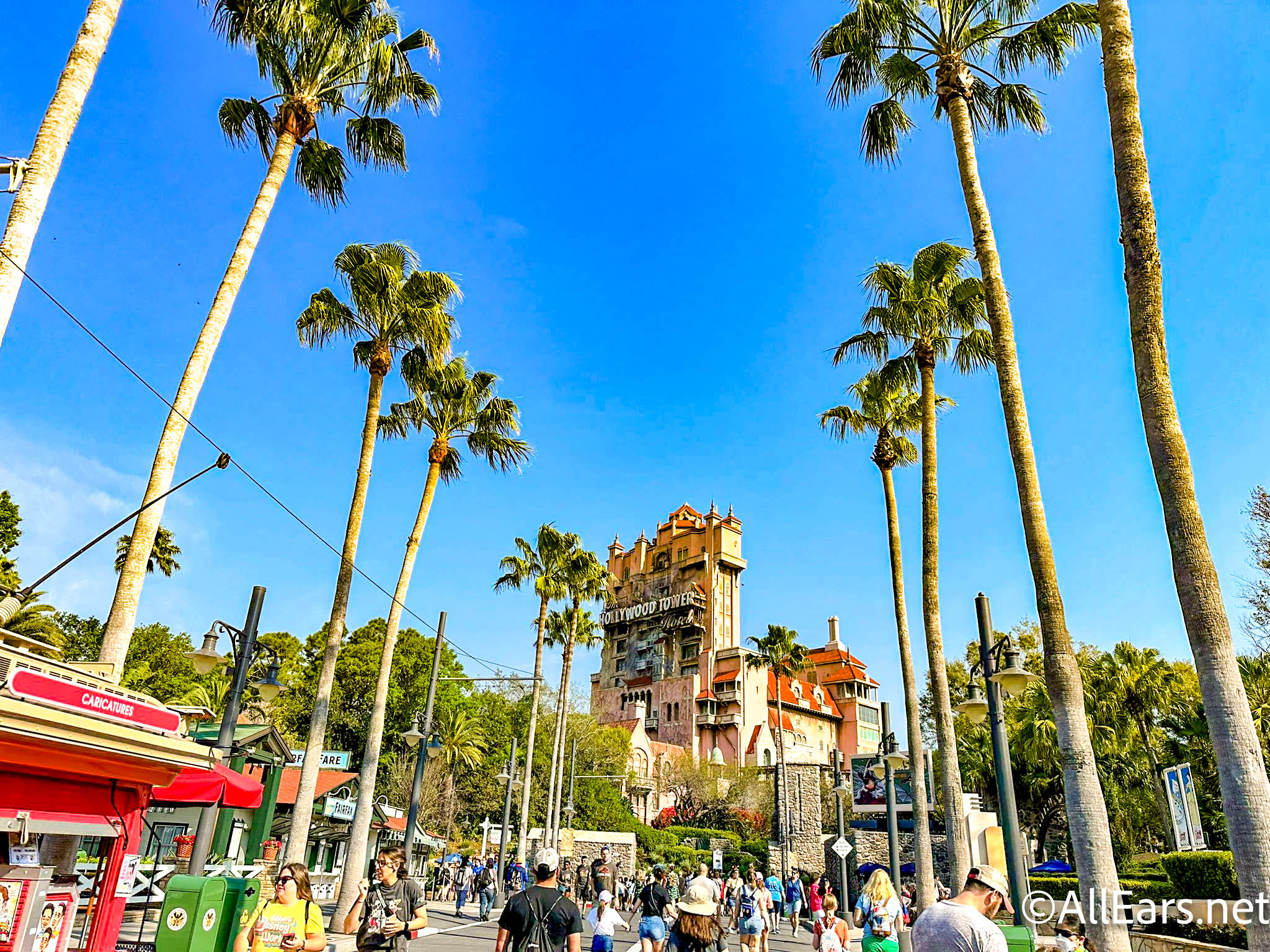

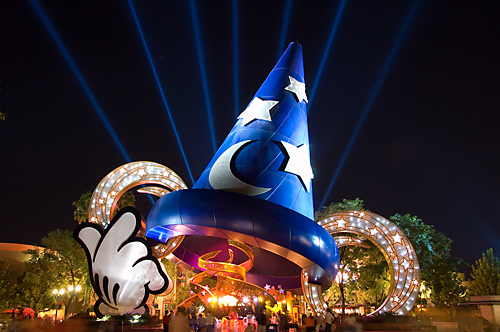
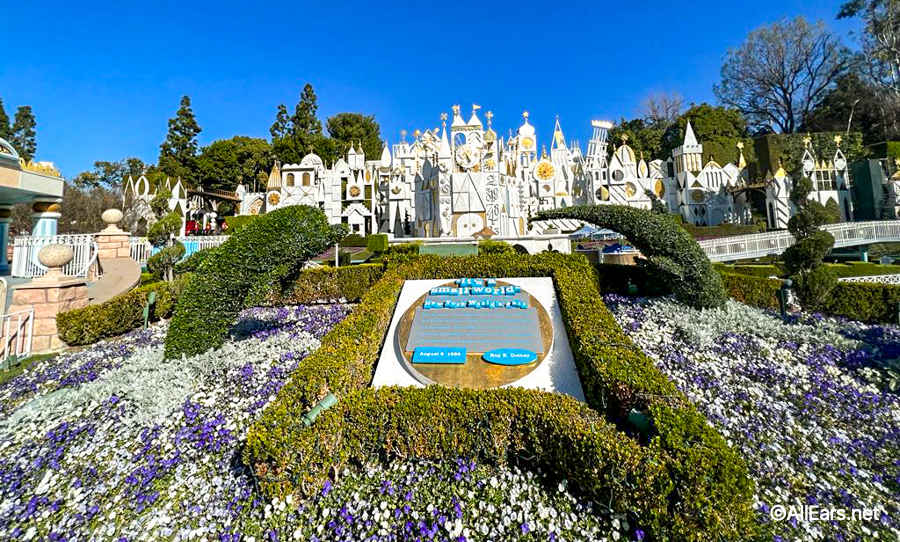
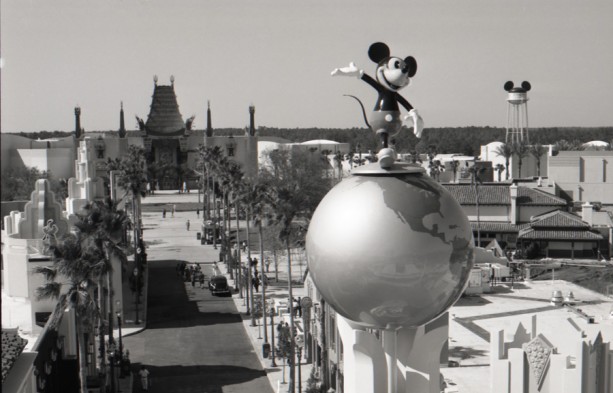
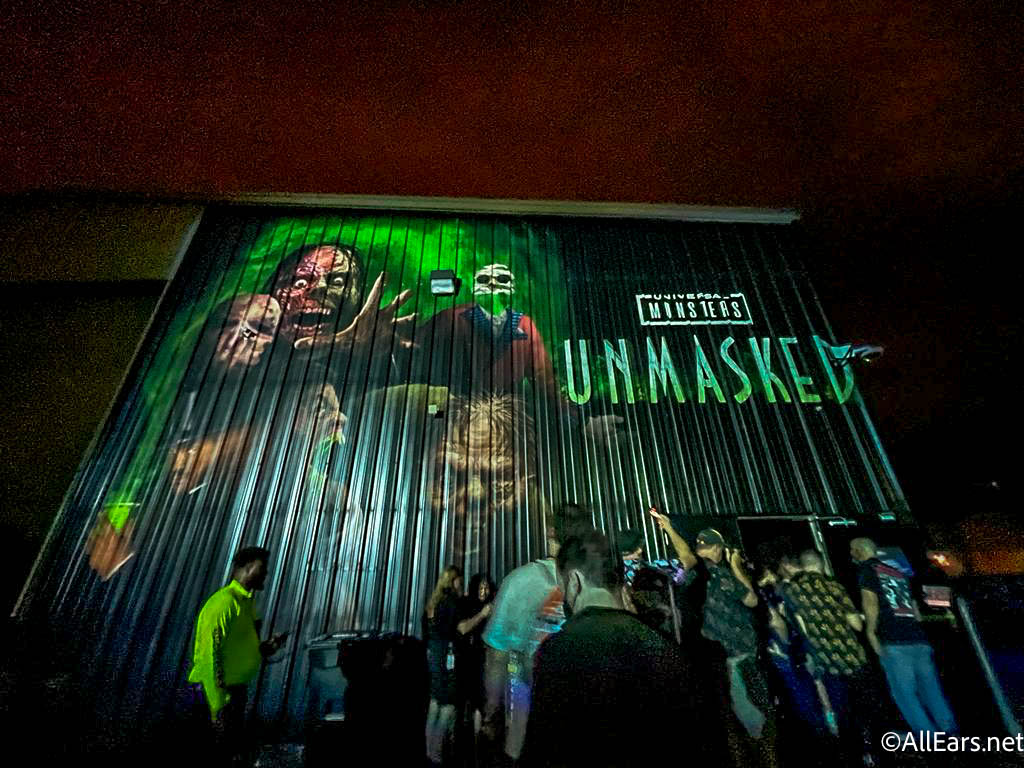
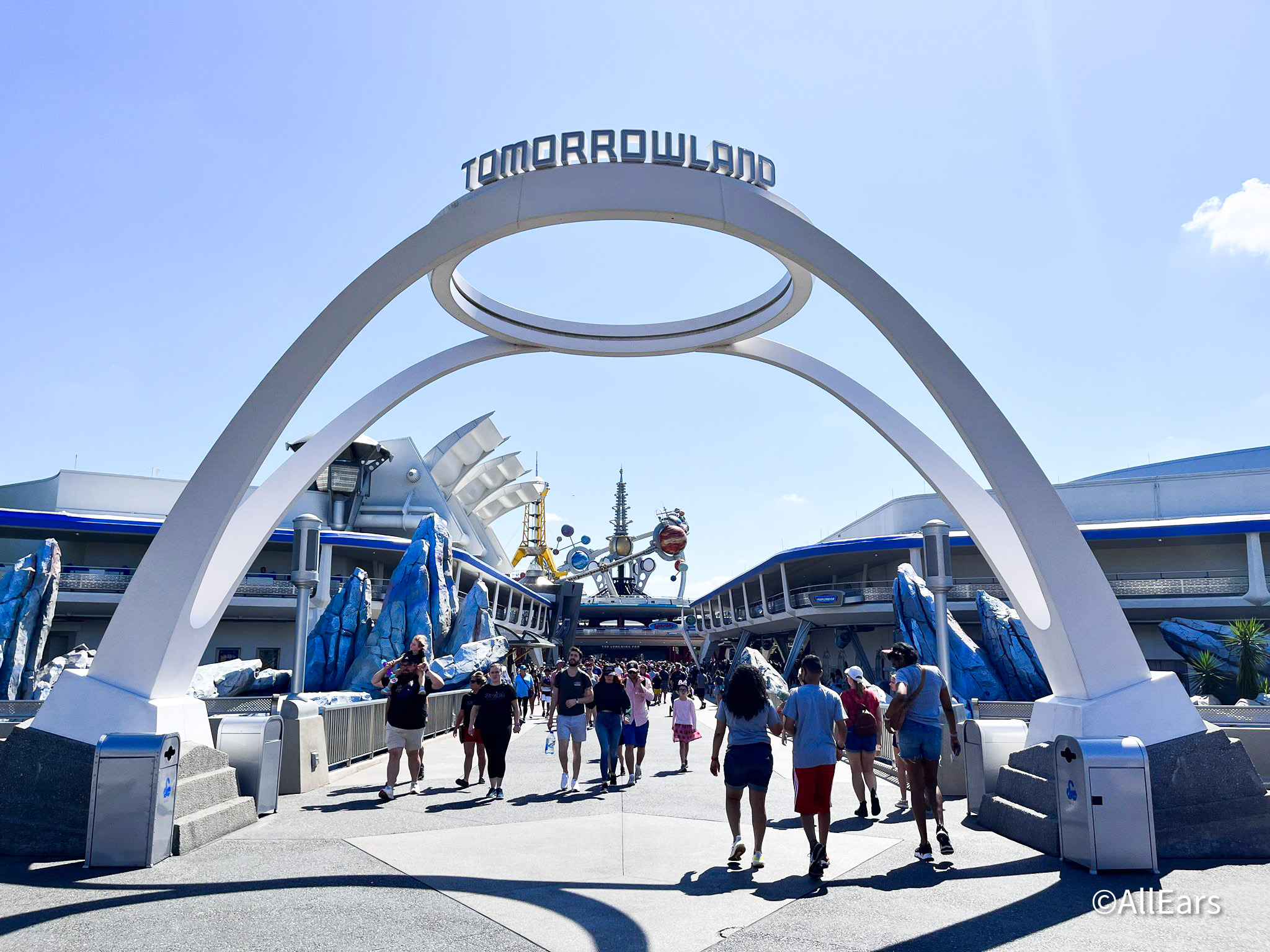

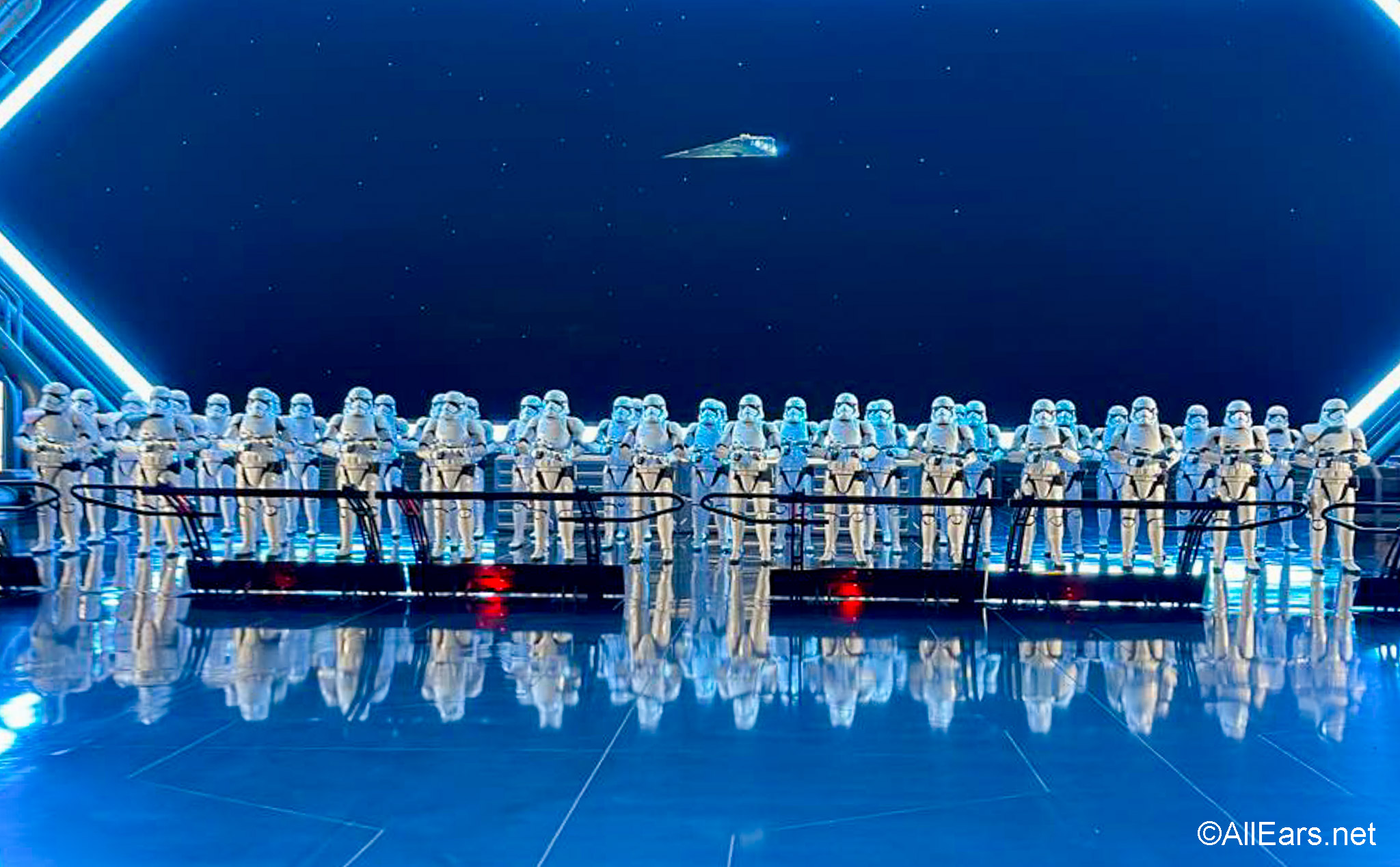
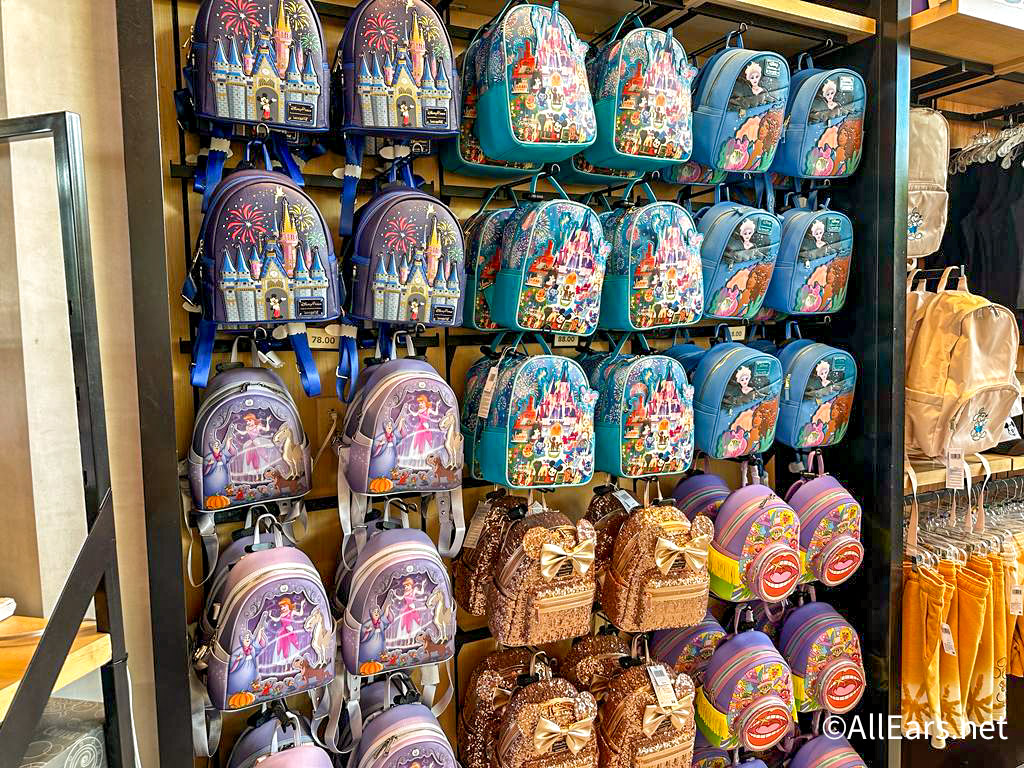
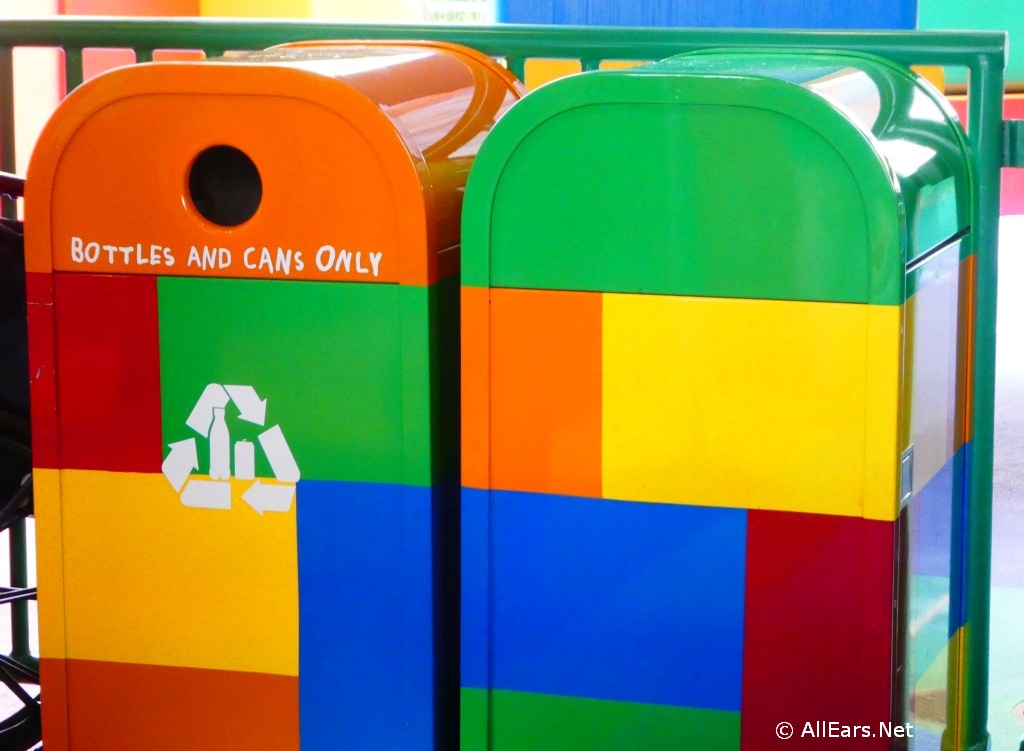
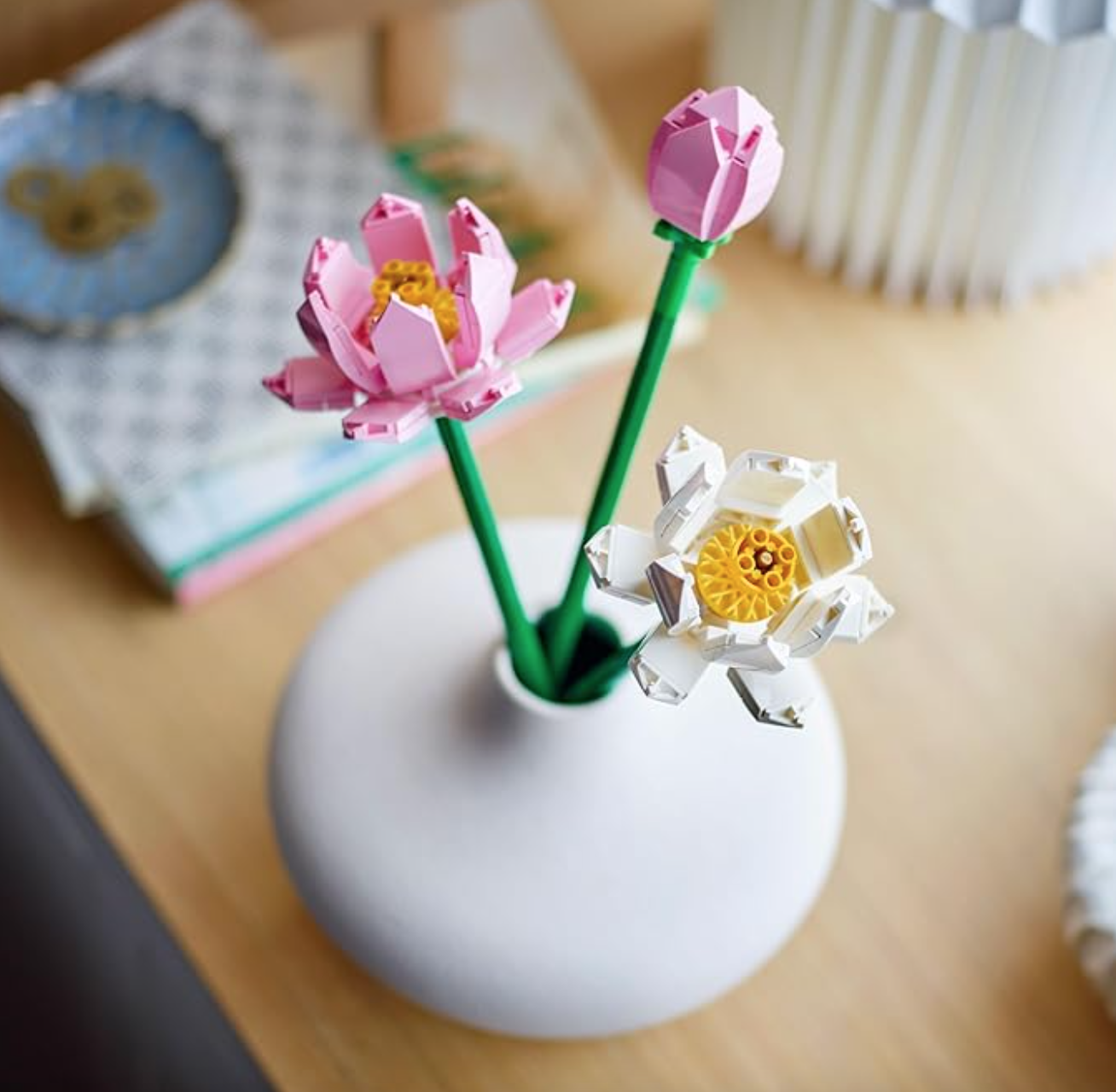
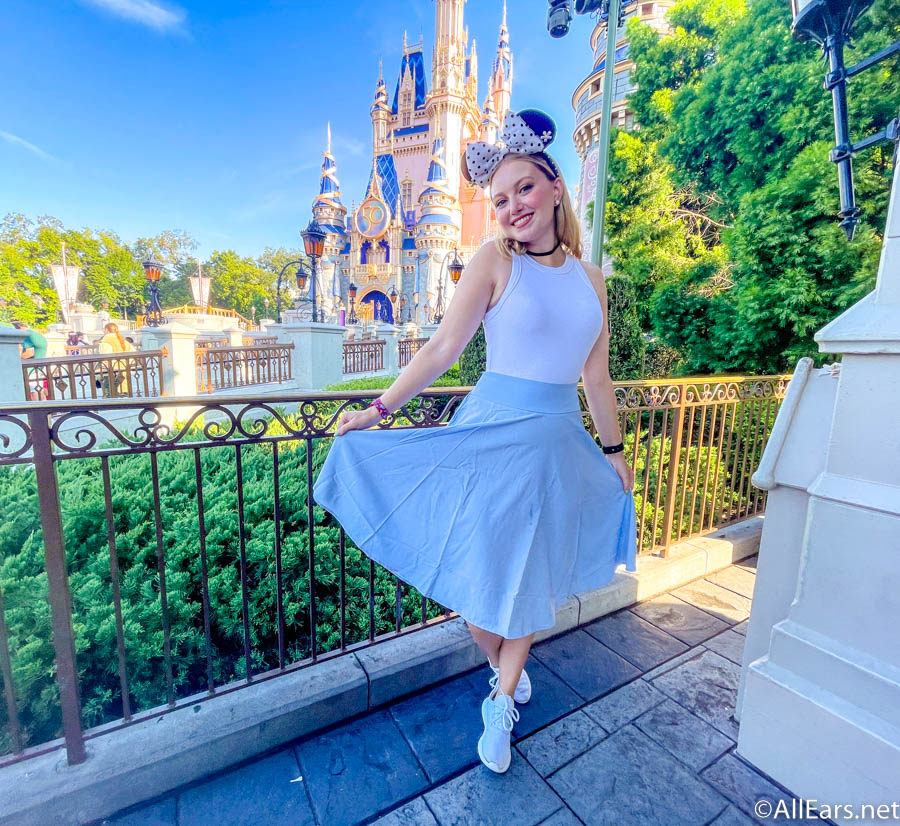
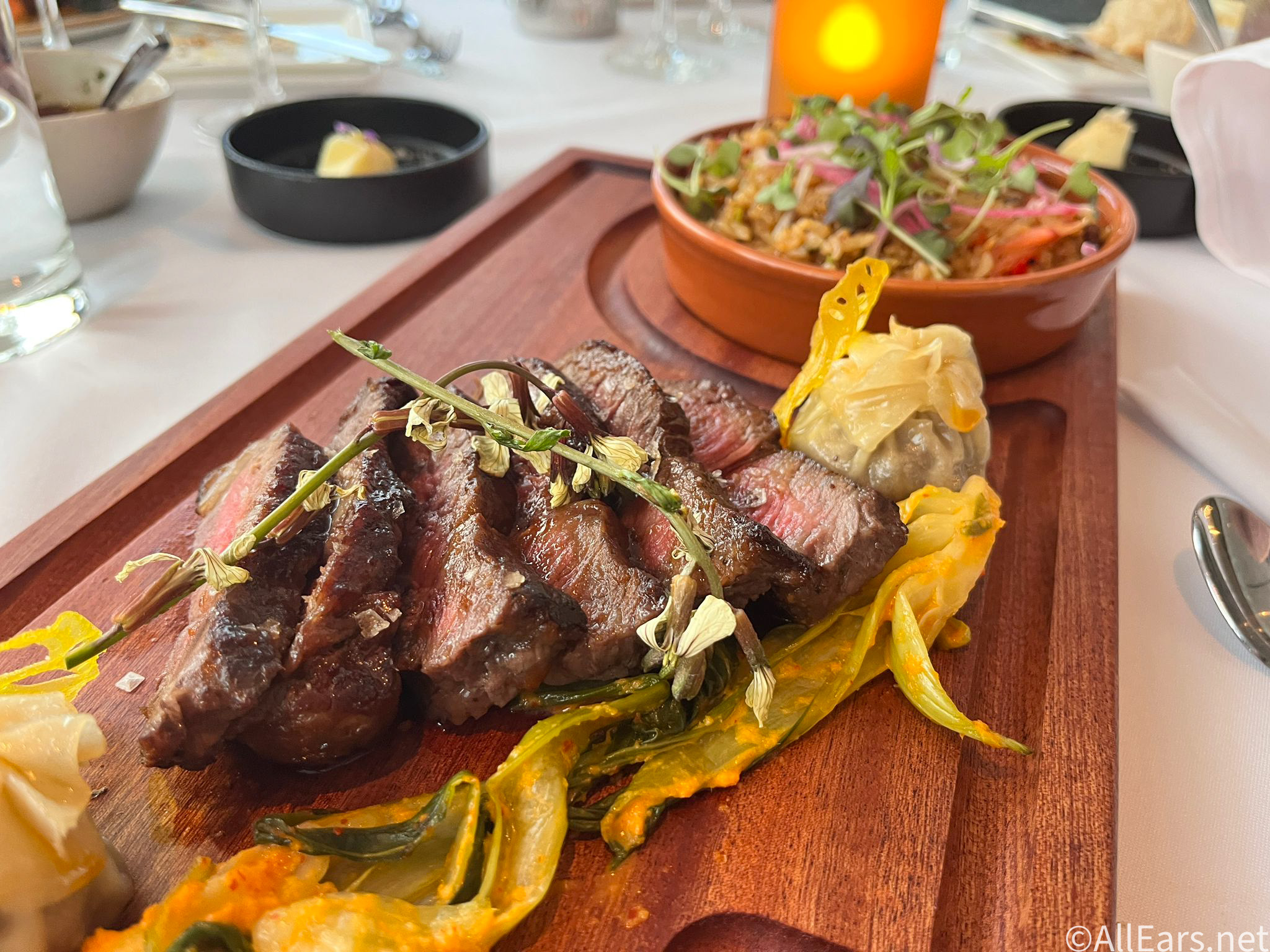



What a wonderful post!
You had me smiling the entire time I was reading, thinking about how I interact with the Parks. I never thought about the Parks as living storyboards but you are so right! I can’t wait for my next visit to really look at each Park, Land, Shop and Ride as being part of the storyboard!
Thank you for the reminder of the little things that make the Disney Parks so fantastic!
Hi Gary –
Great blog! In the excitement of being at WDW, I always forget the story boarding that went into the parks. I consider myself lucky to have learned about story boards back in 9th grade many, many moons ago (I probably have the two I made back then in a box in the garage). Having three scenes on a page and not being the best artist made them interesting projects.
One of the photos above is very interesting – it looks Walt is showing us the future. At first I thought he was showing us Disney’s Hollywood Studios with the Pan-Pacific Auditorium style entry way. However, looking up into the photo Walt appears to be showing us the current Disney’s California Adventure. Is that the Carthay Circle Theater at the end of Main Street? Sure does look like it.
– Jeff
PS: A blog and a WDW trip report all at the same time. Gives me lots to read!
[Gary writes: Hi Jeff.
I’m not sure exactly what that model Walt is pointing to is all about. It has plenty of familiar elements including the Carthay Circle Theatre and the Pan-Pacific Auditorium Entrance.
That’s the original concept art for Disneyland behind Walt.]
Hi Gary
thanks for another great column, I really enjoy reading them and the information that you give, keep up the good work
thanks
randy